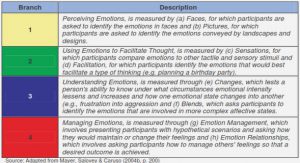Get Complete Project Material File(s) Now! »
Control framework for cooperative autonomous driving
One focus of this thesis is to propose frameworks for the previously mentioned two forms of cooperative control: convoy and autonomous intersection management. In the robotics and control community, generic formation control problems for multiple robots have been an active research area for decades. However, unique challenges exist for on-road formation control problem. Firstly, vehicles are constrained to move in a highly structured environment (a multi-lane road). Thus the formation must adapt to the road shape. Secondly, each individual vehicle as well as the entire convoy must respect trac rules and avoid collisions with other traf- c participants and other convoy members. Thirdly, convoys must be exible so that we can recongure them if necessary. Only a few references [31, 30] consider the coordination of autonomous vehicles on the road. However, none of them fully answers the above mentioned challenges, especially the challenges on intra-convoy collision avoidance and convoy reconguration.
AIM has been an extensive research subject in the last decades. Some AIM designs [33, 35] adopt a centralized approach and use an intersection controller to calculate feasible trajectories for all vehicles. Vehicles are controlled along the planned trajectories to avoid collisions. However, although these designs may have good properties since trajectories can be optimized in advance, a major weakness lies in the diculty to execute the planned trajectories in a changing environment and under control and sensing uncertainties. To enable a quick response to changes and unforeseen events, reactive approaches [36, 37] have been proposed. Instead of programming complete trajectories, vehicles calculate their current control decisions with respect to other vehicles’ states and environmental information. However, purely reactive approaches may be inecient and even lead to deadlocks.
Hybrid MPC based framework for autonomous driving inte- grating logical constraints
In Chapter 4, we propose a hybrid MPC based motion planner for autonomous driving integrating logical constraints. We formulate the motion planning problem as a Mixed Integer Quadratic Programming problem, which can seamlessly consider both continuous and logical constraints. We illustrates how the motion planner can be congured to handle challenging motion planning scenarios in which logical constraints are involved, such as crossing an intersection in the presence of other vehicles, avoiding multiple obstacles, overtaking in presence of oncoming trac and choosing optimal lane and planning lane change trajectories in a multi-lane road.
Feasibility, stability and robustness
Feasibility of the optimization problem at each sample time must be ensured for the formulated MPC problem. Infeasibility usually rises from the constraints thathave some extrinsic variables. For example, in automotive applications, obstacle avoidance constraints contain variables representing the current and future states of obstacles. The values of these variables at k = 0 are usually measured with noisy sensors and the future values are predicted using predened motion models. An optimization problem that is feasible at the current sample time may become infeasible at the next instant when incorporating new measurements. A possible way to preserve feasibility is to consider all possible values of these variables in the constraint formulation, for example, using the notion of maximal invariant set [47], so that we have a theoretical feasibility guarantee for the next sample time if the current one is feasible. A simpler alternative is to convert the concerned constraints to soft constraints. For example, a constraint C1x + C2u + C3 0 is softened to C1x + C2u + C3 with 0. An additional term M2 is also added to the cost function with M being a large constant. In this way, small violations of constraints are tolerated while strongly penalized to preserve feasibility. Both methods are used in this thesis.
Table of contents :
1 Introduction
1.1 Background and motivations
1.1.1 Autonomous driving
1.1.2 Control framework for autonomous driving
1.1.3 Cooperative autonomous driving
1.1.4 Control framework for cooperative autonomous driving
1.2 Contributions
1.2.1 Hybrid MPC based framework for autonomous driving integrating logical constraints
1.2.2 Control framework for convoy
1.2.3 Control framework for autonomous intersection management
1.3 Thesis layout
2 Preliminaries
2.1 Coordinate systems
2.2 Vehicle models
2.2.1 Double integrator
2.2.2 2D linear point mass model
2.2.3 Nonlinear point mass model
2.2.4 Kinematic bicycle model
2.2.5 Concluding remarks
2.3 Model predictive control
2.3.1 Model predictive control for systems with real-valued states .
2.3.2 Model predictive control of hybrid systems
2.3.3 Feasibility, stability and robustness
3 Model Predictive Control for Autonomous Driving
3.1 Introduction
3.2 Control architecture overview
3.3 Obstacle Models
3.4 Motion planner
3.5 Tracking controller
3.6 Simulations
3.6.1 Static NBO avoidance
3.6.2 Dynamic NBO avoidance
3.6.3 Lane change at the presence of an LBO
3.7 Concluding remarks
4 Model Predictive Control for Autonomous Driving Integrating Log- ical Constraints
4.1 Introduction
4.2 Control architecture overview
4.3 Motion Planner
4.3.1 Model
4.3.2 From logic propositions to mixed integer constraints
4.3.3 MPC formulation
4.4 Applicative examples and simulations
4.4.1 Speed bump
4.4.2 Intersection crossing
4.4.3 Obstacle avoidance
4.4.4 Overtaking in a two-lane road
4.4.5 Lane change
4.5 Experiment
4.6 Concluding remarks
5 Control Framework for Convoy
5.1 Introduction
5.2 Control architecture overview
5.3 Convoy supervisor
5.3.1 Convoy model
5.3.2 Intra-convoy collision avoidance
5.3.3 Dynamic formation modication
5.4 Local vehicle controller
5.5 Simulations
5.5.1 Obstacle avoidance
5.5.2 Dynamic convoy reconguraiton
5.6 Concluding remarks
6 Control Framework for Autonomous Intersection Management
6.1 Introduction
6.2 System model
6.3 Control architecture overview
6.4 Intersection controller
6.5 Local vehicle controller
6.5.1 Priority-preserving condition
6.5.2 MPC formulation
6.6 Theoretic results for the proposed design
6.7 Simulation
6.8 Concluding remarks
7 Conclusions and perspectives
Bibliography






